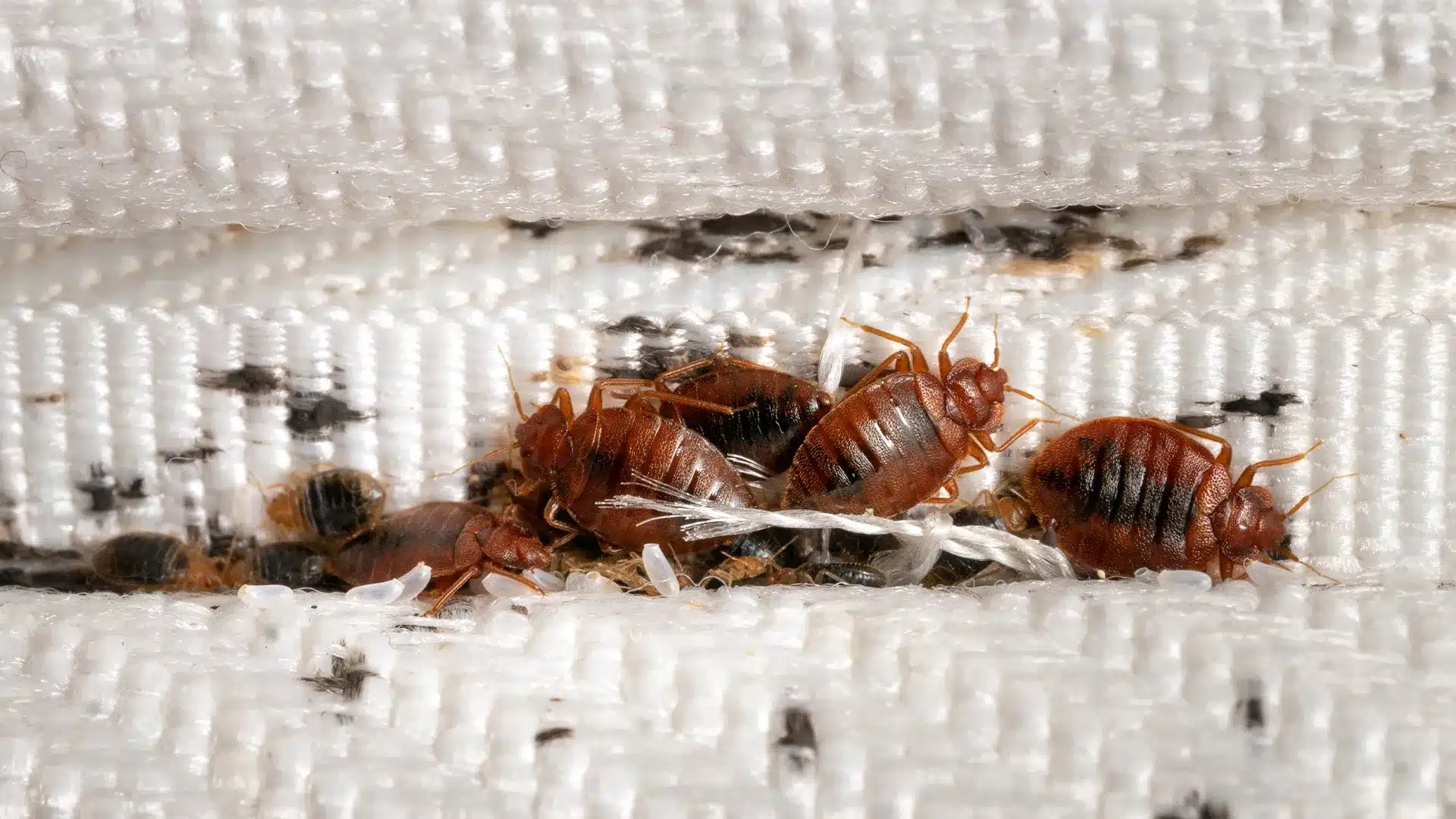Professional Bed Bug Exterminator: DC Providers and Heat Treatment
Professional Bed Bug Exterminator: DC Providers and Heat Treatment
Blog Article
Discovering the Scientific Research Behind Bed Insect Heat Treatments as a Sustainable Parasite Management Strategy
One such method that has obtained grip in current years is the usage of warm therapies to combat bed pest problems. The complexities of how warmth efficiently eliminates bed insects and the wider ramifications for lasting bug management techniques make this a subject worth exploring additionally.
Bed Bug Heat Treatment Process

Thermal Death Factor for Bed Insects
Subjecting bed bugs to raised temperatures past their thermal tolerance range is critical for achieving reliable eradication in warm therapy processes. The thermal fatality factor for bed pests describes the temperature at which these bugs can not make it through. Research study shows that bed insects begin to die when exposed to temperature levels above 113 ° F(45 ° C) for a sustained period. As the temperature boosts, so does the death price of bed insects. At around 118 ° F(48 ° C ), bed bugs start to pass away swiftly, with a death rate of almost 99% within minutes of direct exposure. This shows the level of sensitivity of bed insects to heats and highlights the effectiveness of warm therapies in eliminating infestations. By getting to and maintaining temperature levels above the thermal fatality factor for bed insects, insect management experts can ensure extensive removal of bed insect populaces, consisting of hard-to-reach areas where chemical therapies may be less effective. Understanding the thermal fatality factor for bed bugs is vital for implementing successful heat treatment approaches and accomplishing sustainable pest monitoring outcomes.
Advantages of Warm Treatments
Having actually developed the critical thermal fatality factor for bed insects, it is imperative to currently discover the significant benefits that heat therapies use in efficiently eliminating these durable insects. One of the key advantages is that warm can penetrate deep into cracks and gaps where bed insects hide, ensuring that even the most hard-to-reach areas are heated up to dangerous temperature levels.
Furthermore, warmth therapies are eco pleasant and safe, making them a sustainable pest administration technique. Unlike chemical pesticides, warm treatments do not leave unsafe deposits that can position threats to human health or the setting. This element is specifically official source crucial in delicate atmospheres such as hospitals, colleges, and residential areas where chemical usage may not be preferable.
Additionally, warm treatments have a high success rate in removing bed insect infestations in a solitary therapy, decreasing the demand for multiple gos to and reducing disruption to passengers. This efficiency not just saves money and time but additionally provides assurance to those dealing with bed pest troubles.
Effectiveness of Warmth Treatment

Heat therapies have the added advantage of killing bed bug eggs, which are typically immune to traditional chemical therapies. Generally, the effectiveness of heat treatments in getting rid of bed insect problems makes them a lasting and reliable bug administration approach.
Sustainable Bug Management Benefits
Executing sustainable parasite management techniques link provides long-term benefits for both the setting and public health and wellness. By utilizing approaches such as heat treatments for parasite control, we can lower the reliance on damaging chemical pesticides that can have adverse results on environments and human wellness - bed bug treatment. Sustainable bug monitoring techniques aid in preserving biodiversity by targeting details bugs without hurting non-target organisms, consequently keeping a well balanced ecological community
Moreover, lasting pest administration practices contribute to the general wellness and wellness of the public. By decreasing direct exposure to toxic chemicals utilized in standard parasite control methods, warm therapies provide a much safer alternative for insect management in household, business, and public rooms. This reduction in chemical use additionally helps in stopping chemical deposits from infecting dirt, air, and water, safeguarding environmental high quality.
Conclusion
Finally, bed pest warmth treatments have been shown to be a reliable and sustainable insect administration strategy. The thermal fatality factor for bed pests makes them vulnerable to heat treatments, which have many benefits over standard chemical treatments. The performance of heat therapies in getting rid of bed insect infestations while decreasing environmental effect highlights the potential of this technique as a sustainable remedy for parasite control.
The bed bug heat treatment procedure entails increasing the temperature within ravaged locations to a level that effectively gets rid of bed pests and their eggs. By getting to and preserving temperatures above the thermal fatality point for bed insects, pest management professionals can ensure extensive removal of bed insect populaces, consisting of hard-to-reach areas where chemical therapies might be much less efficient. One of the key advantages is that warm can pass through deep right into splits and holes where bed pests hide, making sure that also the most hard-to-reach areas are heated up to deadly temperature levels. Unlike chemical therapies that might leave behind immune populaces, warmth therapies provide a safe and ecologically pleasant solution that can permeate deep into furnishings, wall surfaces, and various other hard-to-reach areas where bed insects hide.
The thermal fatality factor for bed pests makes them at risk to heat treatments, which have various Click This Link advantages over typical chemical therapies.
Report this page